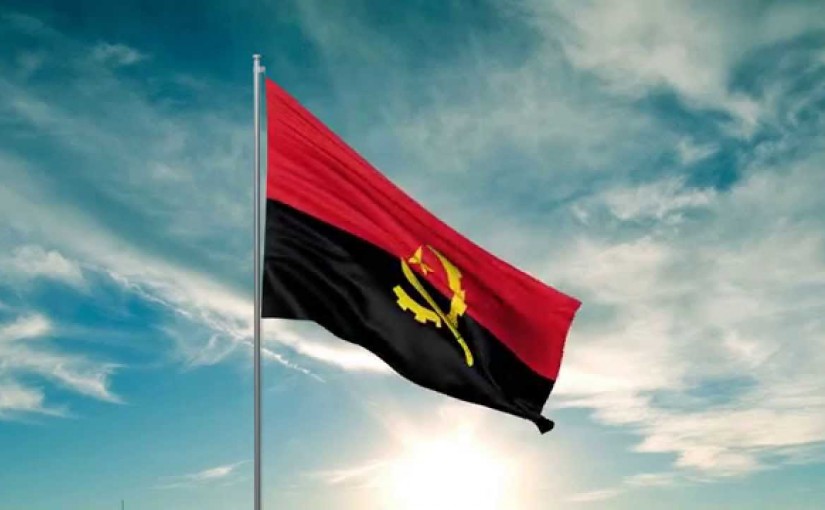Portugal win Nations League title with shootout triumph over Spain
Angola gets downgraded to ‘B’, outlook negative

Fitch Ratings has downgraded Angola’s long-term foreign and local currency issuer default ratings (IDR) to ‘B’ from ‘B+’. The outlooks are negative.
The issue ratings on the country’s senior unsecured foreign currency bonds have also been downgraded to ‘B’ from ‘B+’. The country ceiling has been revised down to ‘B’ from ‘B+’, and the short-term foreign and local currency IDRs have been affirmed at ‘B’, Fitch said in a statement.
The downgrade of Angola’s IDRs reflected various key rating drivers and their relative weights, including that Angola continued to suffer from a severe oil shock – oil accounted for over 95 percent of total export revenue and around 50 percent of government revenue – leading to a sharp worsening of macroeconomic, fiscal, and external metrics.
Sustained pressure on the balance of payments had led the authorities to restrict foreign currency availability, creating a severe liquidity shortage. Between January and August, the National Bank of Angola (BNA) sold only around US6bn in the domestic market, compared with over US12bn in the same period in 2015, contributing to a sharp widening in the parallel market.
The lack of liquidity had adversely affected non-oil sectors, most of which were heavily reliant on imports. Data from the statistical office showed that confidence in all non-oil sectors was the lowest since 2008 – even surpassing the 2009 crisis. The oil sector had maintained some dynamism – production had averaged close to 1.76m barrels per day in 2016 – but Fitch expected the economy to post zero growth in 2016, down from three percent in 2015 and the worst performance in 14 years.
Consumer price inflation reached 38 percent in August 2016 owing to the sharp depreciation of the currency and a strong pass-through effect. Fitch expected it to average over 30 percent in 2016, compared with the ‘B’ median of 4.5 percent.
Fitch forecast the fiscal deficit to widen from 3.8 percent of GDP in 2015 to 5.8 percent of GDP in 2016, despite significant expenditure reforms, which only partially offset the impact of lower oil revenues. Capital expenditure was likely to pick-up in 2H16 from exceptionally low levels in 1H16.
“We forecast the deficit at 6.6 percent in 2017 as presidential elections lead to a rise in expenditure. There are risks that expenditure overshoots next year, which would likely require a faster drawdown of government deposits.
“The government has chosen to finance its deficits mainly by increasing debt rather than drawing on its fiscal buffers. According to the authorities, Angola has received US8bn in new project-loans from China since late 2015. This will lead to public debt reaching close to 60 percent of GDP by end-2016, up from 24.5 percent in 2013, and above the ‘B’ median of 56 percent.”
The sizeable share of foreign currency denominated debt – 42 percent at end-2015 – exposed the debt burden to potential further depreciation of the exchange rate. Interest payments as percentage of revenues were also set to rise sharply to over 14 percent, double 2015 levels. Contingent liabilities were also a source of risk, with the debt of Sonangol, the state oil company, at around 14 percent of GDP at mid-2016.
Fitch expected the current account deficits to remain large in 2016-18, averaging 5.5 percent of GDP. The lack of external liquidity had forced a sharp import compression, with imports falling by close to 55 percent y-o-y in 1H16. However, it would be challenging to rebalance the external accounts further with import demand set to rise gradually in line with resumption of capital spending and non-oil exports remaining minimal. Foreign direct investment had been falling and Fitch forecast Angola would become a net external debtor in 2016.
As a result of currency depreciation, GDP per capita in Angola was expected to fall to US3000 in 2016, the lowest level in a decade and below the ‘B’ median of US3500. Moreover, the economic situation had compounded Angola’s weak institutional and policy capacity, as evidenced by the outbreak of malaria and yellow fever epidemics in 1H16, the ratings agency said.












Leave a Reply
Be the First to Comment!
You must be logged in to post a comment.
You must be logged in to post a comment.